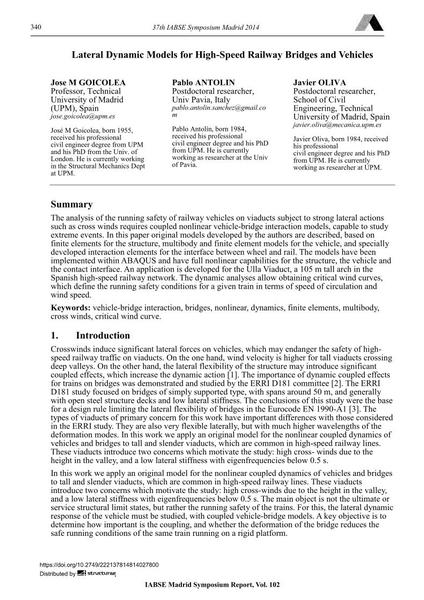Lateral Dynamic Models for High-Speed Railway Bridges and Vehicles

|
|
|||||||||||
Bibliographic Details
| Author(s): |
José M. Goicolea
Pablo Antolín Javier Oliva |
||||
|---|---|---|---|---|---|
| Medium: | conference paper | ||||
| Language(s): | English | ||||
| Conference: | IABSE Symposium: Engineering for Progress, Nature and People, Madrid, Spain, 3-5 September 2014 | ||||
| Published in: | IABSE Symposium Madrid 2014 | ||||
|
|||||
| Page(s): | 340-347 | ||||
| Total no. of pages: | 8 | ||||
| Year: | 2014 | ||||
| DOI: | 10.2749/222137814814027800 | ||||
| Abstract: |
The analysis of the running safety of railway vehicles on viaducts subject to strong lateral actions such as cross winds requires coupled nonlinear vehicle-bridge interaction models, capable to study extreme events. In this paper original models developed by the authors are described, based on finite elements for the structure, multibody and finite element models for the vehicle, and specially developed interaction elements for the interface between wheel and rail. The models have been implemented within ABAQUS and have full nonlinear capabilities for the structure, the vehicle and the contact interface. An application is developed for the Ulla Viaduct, a 105 m tall arch in the Spanish high-speed railway network. The dynamic analyses allow obtaining critical wind curves, which define the running safety conditions for a given train in terms of speed of circulation and wind speed. |
||||
| Keywords: |
bridges finite elements FE dynamics vehicle-bridge interaction non-linear multibody cross winds critical wind curve
|
||||
